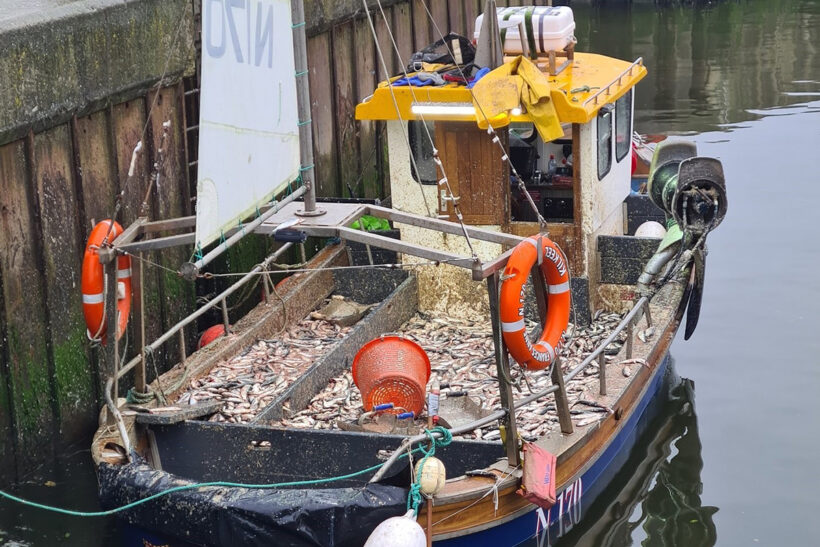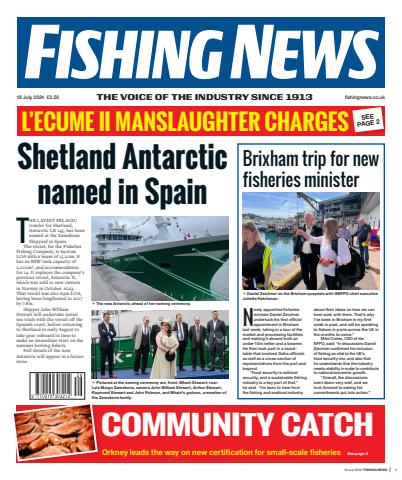The Northern Irish authorities finally released the herring quota received as part of the Brexit TCA shortly after FN went to press last week, allowing inshore drift-netters and smaller trawlers on the Mourne coast to access the traditional fishery.
The additional 1,100t of quota was eventually split between the main FQA holders, the Mourne herring drift-net fleet, which received an additional 50t of quota, and the inshore trawl fleet, which received an additional 260t.
The response from inshore fishermen was immediate, with drift-netters finding fish quickly, and putting good shots ashore. The additional 50t of quota, one fisherman told FN, might have seemed small, but was extremely welcome. “It is all we need now, given that we lost the early part of the season, when we also had perfect weather for the fishery. Now it’s a question of getting out on those nights when we have a window.”
The belated quota share-out followed complaints from all sectors of the industry about the delay – which was caused, in part, by a failure within the Northern Ireland industry to present an agreed solution to DAERA. The quota share-out between sectors in Northern Ireland was further complicated after an overshoot by the smaller trawl fleet of its quota allocations in 2022.
In the absence of any devolved government in Northern Ireland, due to the walk-out of DUP politicians protesting about post- Brexit trade arangements, DAERA officials have been forced to decide on the allocations of both herring and Irish Sea Nephrops quota.
The latter quota was also allocated last week, mainly on the basis of existing FQA shares, but with 160t of quota held back for non-sector vessels, including an unspecified tonnage for ‘experimental’ fisheries.
The three larger pelagic trawlers in the Northern Ireland fleet received the remainder of the herring allocation.
The Isle of Man fishery, with 100t allocated, and three vessels involved was coming to a close as FN went to press. One skipper, on his last day on the fishery, working off the east coast of the island, told FN that the ‘odd fish now is looking spent’, with the fishery completing just as the fish were starting to lose condition.
Clare Barber, the Isle of Man government minister for environment, food and agriculture, said: “This year, the Isle of Man received 100t of herring, and the expectation is that this will increase incrementally to 400t by 2026.
“The UK government’s own figures suggest that almost 60% of the north Irish Sea herring fishery occurs within the island’s territorial sea. Despite this, the Manx fleet have not had meaningful access to these fisheries for decades as a result of how the UK quota management rules have developed over time.
“The additional quota is crucially important for the Manx industry. Of course, I recognise it will take time for the Manx industry to make full use of these additional quotas. It’s important that the fishing industry is provided sufficient time and certainty to allow for investments to be made with a degree of certainty, and for the value of the quotas to be effectively maximised in the long term.”
This story was taken from the latest issue of Fishing News. For more up-to-date and in-depth reports on the UK and Irish commercial fishing sector, subscribe to Fishing News here or buy the latest single issue for just £3.30 here.
Sign up to Fishing News’ FREE e-newsletter here.






